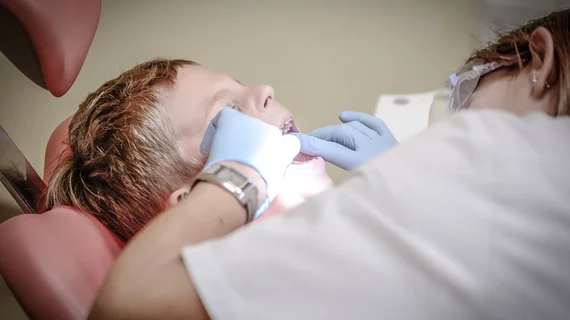Oral infections during childhood linked to CVD later in life
A study of more than 750 kids who were followed into their thirties has linked oral infections in childhood to CVD later in life—particularly subclinical carotid atherosclerosis.
In JAMA Network Open, first author Pirkko J. Pussinen, PhD, of the University of Helsinki, and colleagues said the role of periodontitis as a risk factor for atherosclerotic cardiovascular diseases has been previously established, but existing evidence doesn’t support causality. The medical community knows very little, in particular, about how kids’ dental health translates to CV outcomes in adulthood.
“Identifying all childhood risk factors is important because improvements in risk factor burden by young adulthood are advantageous for cardiometabolic health in middle age,” Pussinen and co-authors wrote. “The role of childhood oral infections in cardiovascular risk is poorly understood, and to date no long-term studies have been conducted, to our knowledge.”
Pussinen’s team studied 755 kids enrolled in the Cardiovascular Risk in Young Finns Study, which launched back in 1980. Participants underwent CV and clinical oral exams during childhood, when they were either 6, 9 or 12 years old, then had clinical cardiovascular checkups in 2001 and/or 2007, when they were in their twenties and thirties.
The researchers documented cardiovascular risk factors and four signs of oral infection—bleeding on probing, periodontal probing pocket depth, caries and dental fillings—during the study’s decades of follow-up. At baseline, children were on average 8 years old.
The team found the cumulative exposure to risk factors increased with an increasing number of oral infections both in childhood and adulthood. While 33 kids in total, or 4.5% of the pool, exhibited no signs of oral infections during the study, 5.6% had one sign, 17.4% had two signs, 38.3% had three signs and 34.1% had four signs. In linear regression, oral infections that signified periodontal disease, caries or both were associated with adulthood IMT (intima-media thickness), a measure of vascular disease.
Any sign of oral infection in childhood was linked to increased IMT with a relative risk of 1.87, and exhibiting all four signs produced a relative risk of 1.95. The relationship was more obvious in boys, who saw a 2.25 relative risk in the presence of all four signs of infection.
In a linked JAMA editorial, Anwar T. Merchant, DMD, ScD, and Salim S. Virani, MD, PhD, said Pussinen et al.’s results could be explained in three ways. Either people who have poor oral health as children also have poor oral health as adults, poor oral health doesn’t have a causal effect on CVD but rather shares common risk factors with the disease, or selection bias tainted the study. The last two aren’t likely, though, the editorialists said, since Pussinen and her colleagues were careful to correct for bias and measure their risk factors accurately.
“The article by Pussinen et al. underscores the idea that the distinction between oral health and systemic health is blurred and somewhat artificial,” Merchant and Virani wrote. “Cardiovascular disease and periodontal disease share common risk factors, and controlling those risk factors could result in better overall health. For example, if dentists encouraged their patients to quit smoking and visit their primary care clinician, and primary care clinicians encouraged their patients to maintain good oral health and visit their dentist regularly, the ultimate benefit would be better dental and cardiovascular health.”

